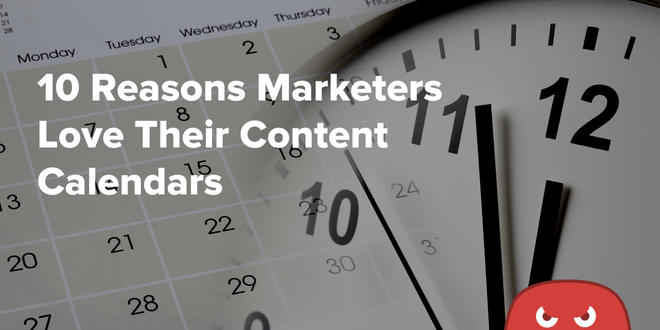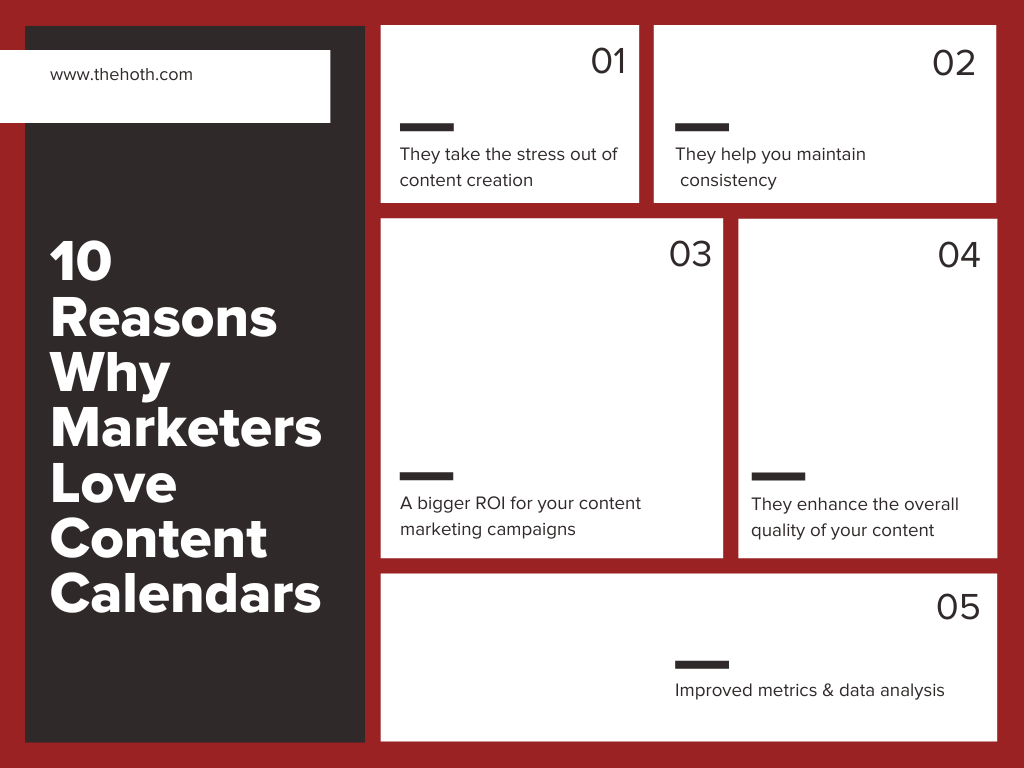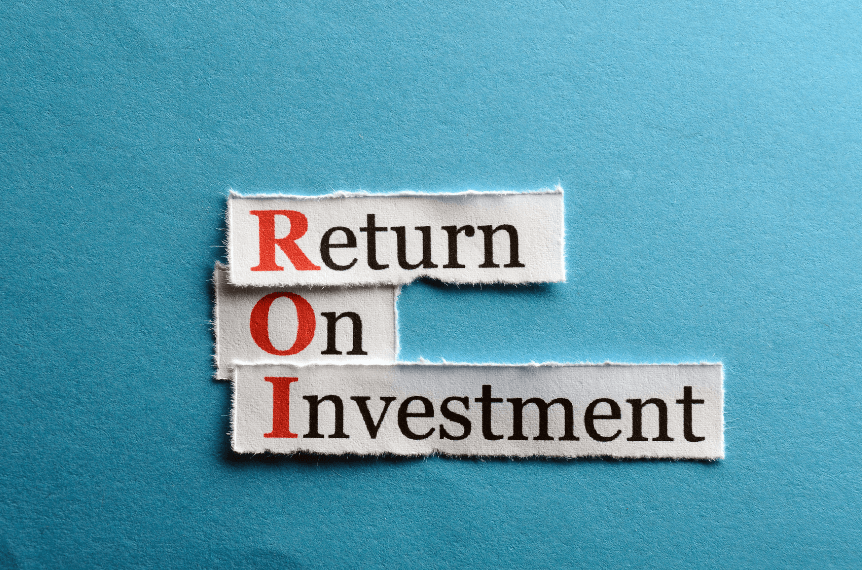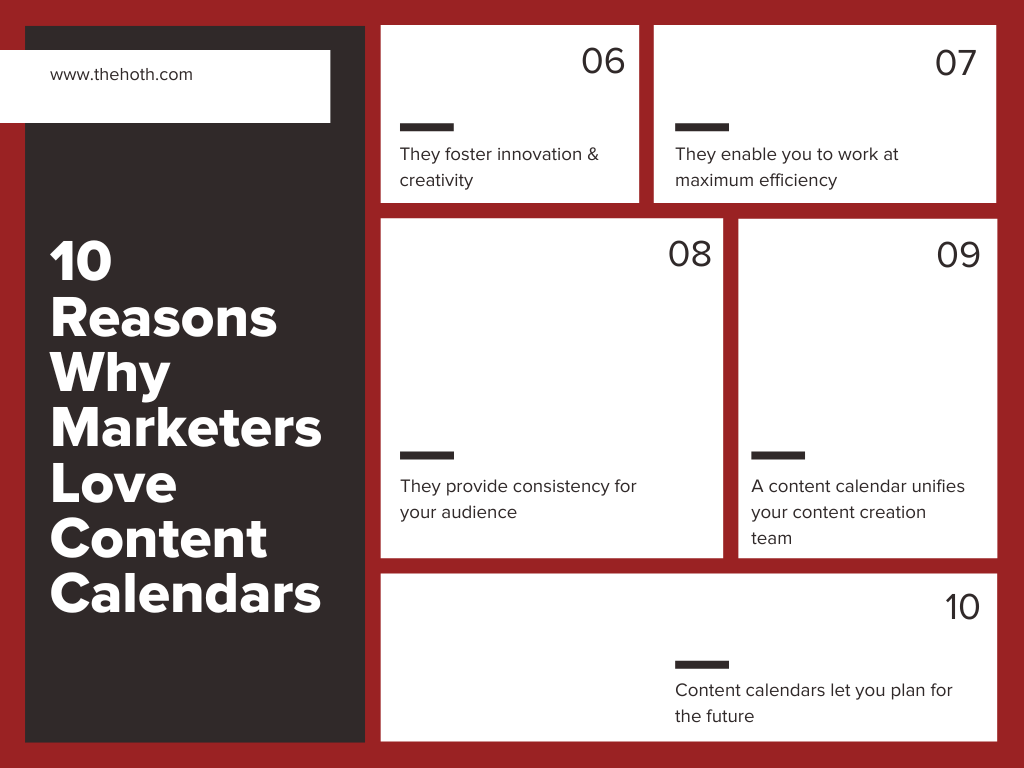Quick Links
Do you want to increase your brand’s online visibility while generating new leads & sales on a consistent basis?
If so, you’ll need an airtight content marketing strategy to attract new prospects and rise to the top of the SERPs (search engine results pages).
Content creation is so effective that 82% of marketers actively invest in content marketing.
According to a study by the Content Marketing Institute, 67% of marketers report that their content helps generate leads, and 72% say it’s excellent for educating their audience.
These stats reflect the importance of content production for modern businesses, but how are you supposed to keep up with the competition?
After all, for a content strategy to find success, consistency is key.
The frequency of your posts also matters as you should try to blog at least 2 – 4 times a week, not to mention releasing new social media posts as often as you can (without sacrificing quality, of course).
Trying to put together a quality content strategy without a way to stay organized isn’t fun, as you’ll waste time keeping track of email threads, checking up on projects, and coming up with new content ideas.
That’s why you must create an editorial calendar for all your content.
Trust us, a detailed content calendar will revolutionize your entire strategy, so don’t wait to check out the 10 reasons why we love content calendars.
Understanding Content Calendars
A content calendar is a central location that contains all your upcoming pieces of content, their due dates, and the names of the content creators assigned to complete them.
It’s an invaluable project management tool for content planning & production, as it will help you stay consistent with your content efforts.
As mentioned previously, a successful content strategy is all about releasing relevant content to your target audience on a consistent basis.
The more consistent you are with your content, the better it is for your SEO profile – and your target audience will learn when to expect your upcoming content.
Your content calendar should encompass all the types of content you produce, not just blogs. Be sure to include videos, infographics, and social posts in your content marketing calendar as well.
That way, you’ll only have to monitor one location to keep track of your entire content strategy instead of having to bounce back and forth between multiple apps.
There are lots of ways to go about developing a content calendar, from using advanced project management tools like Asana to creating one manually in Excel or using a free content calendar template that you find online.
Whatever method you choose, creating a content calendar will streamline your workflows, improve the quality of your content, aid in brainstorming new ideas, and keep track of your freelancers & content creators.
Speaking from personal experience, we don’t know what we’d do without our precious content calendar at The HOTH. It keeps our posting schedule consistent and provides accountability for our content creators, which is why you should develop one too.
10 Reasons Why Marketers Love Content Calendars
Content calendars are to digital marketers what daily planners are for busy professionals; they’re a priceless resource that helps keep everything organized and running smoothly.
Imagine how difficult it would be to stay on top of all your meetings and corporate events without your handy business calendar.
That’s how hard it is for digital marketers & content strategists to keep track of their publishing schedules without their trusty content calendars.
If you’re still on the fence about developing one for your business, here are the top 10 reasons why we love content calendars.
#1: They take the stress out of content creation
When it comes to your content strategy, flying by the seat of your pants is a recipe for elevated stress levels.
That’s because a content schedule has so many moving parts that trying to keep track of it all without a calendar will drive you crazy.
Every day, you’ll have to brainstorm new content ideas, select which social media platforms to post on, and scramble to edit & publish content your creators submitted in the days prior. In other words, it’ll be a constant struggle to keep your head above water, which is bad for both your content strategy and your mental health.
Missed due dates, inaccurate facts, and irrelevant content can all occur easier than you think if you don’t have a reliable way to stay organized.
To get ahead of the curve, you need a content calendar to plan out your posts in advance, keep track of assignments, and maintain a consistent publishing schedule.
Doing this will not only supercharge your content strategy but will provide tremendous stress relief on your part.
No longer will you have to show up to work in a state of panic, scrambling to put together a few posts or videos each week.
Instead, you can rest easy at night knowing that you have two full weeks of posts already outlined and ready to go.
#2: They help you maintain consistency
If you want to generate lots of organic traffic, leads, and sales from your content marketing strategy, you have to be remarkably consistent with your efforts.
As shared previously, you need to post blogs several times a week, as well as post to social media platforms at least once a day. That’s not even mentioning the videos, webinars, eBooks, and press releases you need to consistently release, either.
With such steep content demands, your content calendar is the secret weapon that keeps you on track.
Publishing 4 unique blogs a week won’t seem like such an impossible task when you have a central location to brainstorm ideas, outline topics, and assign posts to writers with detailed instructions.
If you ever feel a bit lost, taking a peek at your calendar view is all it takes to understand where you are and where you need to be. Some content calendar apps, like Asana, allow you to color-code tasks to distinguish the type of content, social media channels, the assignee, and more.
That makes it effortless to keep track of your marketing team as they complete their assignments.
With a properly organized content calendar, you won’t have any trouble meeting your publishing goals week after week, gaining new customers, and boosting your SEO profile along the way.
#3: A bigger ROI for your content marketing campaigns
Your content calendar will grant you the biggest superpower there is for improving ROI – more time to plan.
By taking the time to put together a detailed editorial calendar, you’ll be able to develop relevant, evergreen pieces of content for your audience that will continue to earn you money years down the line.
What’s evergreen content?
Content is evergreen whenever it remains fresh to readers for a long period of time. Publishing a piece of evergreen content will yield a higher ROI than a time-sensitive piece.
Examples of evergreen content include product reviews, how-to tutorials, and listicles that cover topics that don’t go out of date. For instance, a how-to video teaching the viewer how to restring a guitar will have tremendous longevity, as there’s no clear ‘expiration date’ for it.
Compare that to a piece entitled ‘Key Takeaways from the 2023 Guitar Expo,’ which has a clear date when it becomes obsolete. As soon as 2023 is over (or even after a few months pass), interest in the Guitar Expo will fade, whereas learning a practical skill like stringing a guitar won’t see such a dramatic dropoff.
The luxury of a content calendar will allow you to come up with more evergreen ideas instead of producing one-off posts that will only see one spike in traffic before fading into obscurity.
#4: They enhance the overall quality of your content
With a social media content calendar guiding your efforts, you’ll see an improvement in the quality of all your content.
More time to plan means more fleshed-out content ideas, better writing, tighter editing, and streamlined workflows. That will make your blogs more insightful, videos more impactful, and infographics more eye-grabbing.
Better quality content means more conversions, organic traffic, and improved metrics like CTR (click-through rate) and bounce rate.
If you’re a startup or small business struggling to compete in your niche, a content calendar can be just what you need to even the playing field. That’s because a well-thought-out strategy with unique, high-quality content will help set you apart from the crowd.
Instead of struggling to release any content at all, you’ll have enough time to plan stand-out posts & videos that outdo your peers – carving out a space for your business in the fiercely competitive market.
#5: Improved metrics & data analysis
Having a content calendar will make it far easier to track & analyze the performance of your content, which will help you tweak your strategy to perfection.
In particular, you should pay close attention to your audience’s feedback and engagement levels with your content.
Are your readers leaving comments on your posts? Have you seen an uptake in newsletter signups & conversions? How long are users staying on a piece of your content before clicking off to another page?
These questions all become far easier to answer with a content calendar.
Why is that?
It’s because you’ll have all your content in one convenient location, making it effortless to find & track your older posts.
Monitoring your metrics and making any necessary adjustments to your strategy is how you find the most success with releasing content.
For instance, you may uncover that your CTR is dwindling, meaning not enough users are clicking on your hyperlinks from search engines. That’s a sign that your meta titles aren’t attention-grabbing enough, so adding some pizazz to them should solve the issue.
That’s only one example of how your content calendar can improve your metrics & data analysis. You can also analyze your traffic & engagement metrics through tools like Google Analytics to uncover the best times to post new content.
#6: They foster innovation & creativity
It’s challenging to think outside the box and get creative with your content when you’re simply trying to keep your head above water.
A proper content calendar will remedy that issue, granting you plenty of time to research, plan, and outline all your posts.
As such, it’ll be easier to innovate and develop more creative ideas, which will help you stand out from the crowd. Instead of simply copying what everyone else is doing, you’ll be able to find ways to set your brand apart.
That could mean shooting interactive videos, writing blogs that provide unique insights & first-hand experience (which is now more crucial than ever due to the E-E-A-T update), and creating informative infographics that have fun custom illustrations.
With the additional breathing room an editorial calendar provides, you’ll have time to brainstorm new ways to earn extra revenue through your content.
For instance, why not sign up for a few affiliate programs and start linking to relevant products in your blogs & videos? Anything you earn can help pay for your content efforts, which will preserve your budget.
You can also start thinking about writing guest posts to acquire high-authority backlinks, which will boost your SEO profile.
#7: They enable you to work at maximum efficiency
Content marketing is very demanding, and if you aren’t highly efficient at producing content, you’ll likely get overshadowed by your competitors.
You need to plan content for upcoming corporate events, product launches, holidays, and news events, which means you’ll be working around the clock unless you have a content calendar.
Taking a quick peek at your calendar will inform you of any upcoming events or launches that you need to plan content for, which will prevent it from creeping up on you at the last minute. After all, nothing is worse than having to slap together a piece of substandard content just to make a crucial publishing date.
In addition, your content calendar serves as a hub for your content team, enabling you to monitor their progress on their assigned tasks.
That’s excellent news for your efficiency, as you’ll be able to stay ahead of any issues before they affect your release dates. If any of your team members are falling behind with their tasks, you’ll be able to see it in your content calendar before it becomes a real issue – giving you the time to reassign the task to someone else.
Working at maximum efficiency will perform miracles for your content strategy and SEO profile, which is definitely a plus.
#8: They provide consistency for your audience
Besides catering to search engine algorithms, posting content consistently will also benefit your audience.
That’s because they’ll get used to your regular release schedule and will look forward to your content each week – which is a fantastic way to build a loyal customer base.
You’ll likely have inconsistent publishing dates without an editorial calendar, which won’t do your business any favors.
Think about it this way; do you subscribe to any prominent content creators on YouTube or other platforms?
In that case, it’s probably because they uploaded so consistently that you started to rely on seeing new high-quality uploads each week.
The same principle applies to your blogs, videos, podcasts, and other forms of content. Your audience will grow more rapidly if you remain consistent with your publishing schedule.
#9: A content calendar unifies your content creation team
You’re wasting a ton of time if you have to bounce back and forth between apps and spreadsheets to monitor your content creators.
That’s why you need to make your content calendar the central hub for all your content creators.
With tools like Trello & Asana, you can assign tasks, monitor progress, and check deadlines all from your content calendar. That ensures that your entire content creation team always remains on the same page.
Not only that, but your team can communicate with one another through the built-in messaging system to ask questions & pass off tasks (i.e., a writer assigning a blog draft to an editor) without the need for your input.
Even a simple content calendar created in Excel will align your team, as it gives them (and you) one easy location to look for their assignments and due dates.
#10: Content calendars let you plan for the future
The final reason we adore content calendars so much is they enable you to look at the big picture – not only for your content strategy but for your business as a whole.
Rather than focusing on what you have to release in the next day or week, a content calendar lets you project much further into the future. You’ll be able to ponder your business needs for the coming months & years, all while brainstorming innovative new content ideas.
You won’t enjoy this freedom of thought if you’re struggling to stay on top of your content needs day by day. A detailed content calendar will help you plan for a bright future for your business, which is why using one is an absolute must for any marketing team.
Final Thoughts: 10 Reasons Marketers Love Their Content Calendars
A content calendar provides marketing teams with so many benefits; it’s no wonder why we love them so much.
They serve as our central planner, think tank, social media management hub, workflow manager, and so much more.
Have you not developed a content calendar & content strategy for your business?
Then you need to drop everything and check out our fully managed content services. If you’re looking for top-tier content creation, our experts at HOTH Blogger won’t let you down, so don’t wait to check us out today.

















